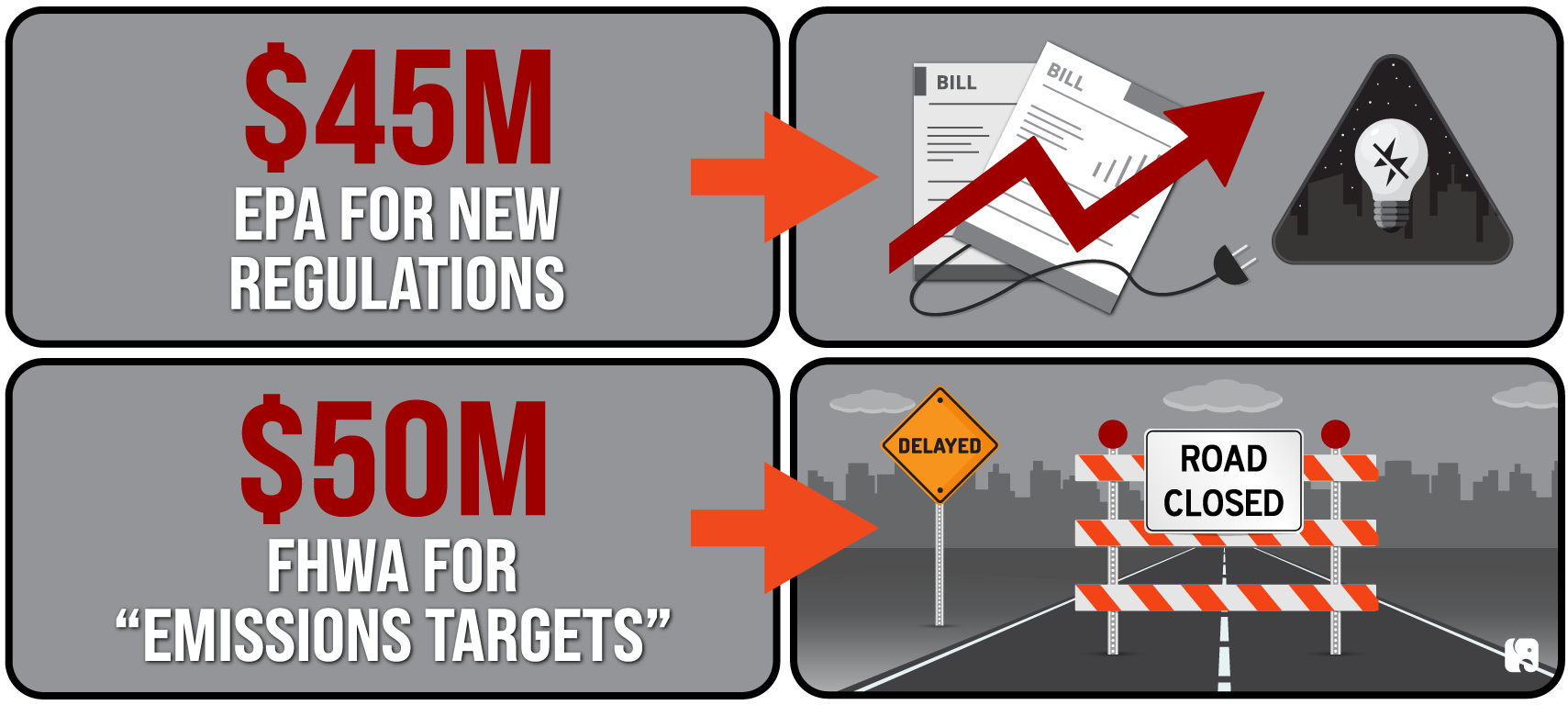Democrats Use the Fine Print to Hide Big Climate Regulation
Democrats are proposing to spend $555 billion in their reckless tax and spending spree on what they say is the “largest effort to combat climate change in American history.” As expensive as that would be, additional costs will come from several provisions buried in the bill that constitute a fraction of overall spending but will have a significant effect on American families.
Money for Regulators Leads to Pain for Americans

-
Their plan includes $45 million for the Environmental Protection Agency “to address air pollution” stemming from greenhouse gas emissions under nine different sections of the Clean Air Act. Among them is Section 111 of the act, which was the basis for the Obama-era Clean Power Plan and has been the subject of litigation ever since. That plan would have driven up energy costs for families and undermined electricity reliability, and now progressives want to go even further. The Supreme Court will hear a case this term brought by 19 states over EPA’s ability to regulate carbon dioxide emissions under the Clean Air Act, challenging a lower court ruling that threw out the Trump administration’s Affordable Clean Energy rule.
-
The legislation would provide EPA with $18 million to implement a new Clean Air Act program to drive down emissions from “electricity generation and use” beyond emissions reductions that would otherwise occur between now and 2031. EPA is not limited in which types of regulations it might try to issue.
-
Democrats would give EPA another $5 million to assist other states in adopting California’s greenhouse gas and zero-emission vehicle regulations for new vehicles. It is part of a broad effort by liberals to limit consumer choice and promote expensive electric vehicles. Governor Gavin Newsom last summer issued an executive order to bar the sale of traditional gas cars in the state after 2035.
-
The bill would provide $50 million to the Federal Highway Administration to set a “performance measure” on greenhouse gas emissions and require states to develop “performance targets” to cut greenhouse gas emissions. Under this scheme, FHWA must arrange for “consequences” for states that fail to meet targets, with no details, parameters, or limitation on what FHWA would do. The new requirement could limit the ability of states to carry out projects to modernize their infrastructure unless they meet undescribed conditions left wholly to FHWA’s discretion. A group of five states and other stakeholders have expressed concern with this unprecedented authority.
In October, the EPA administrator said that his agency “is already aggressively using its rulemaking authority” regardless of what Congress does. The Democrats’ reckless tax and spend plan would add more fuel to this regulatory bonfire.
Next Article Previous Article
